How Fast Can A Chihuahua Run?
The littlest of all breeds, the Chihuahua, may look small, but they are mighty. It’s easy to think that Chihuahuas aren’t particularly swift because of their little legs and delicate builts, but these little guys can MOVE!
These energetic pooches can move faster than their diminutive stature would suggest.

Here, we’ll examine the physiology of this breed and how it might contribute to the breed’s ability to grow into such quick small dogs.
Do Chihuahuas Like Running?
Chihuahuas are frequently perceived as little, placid canines who enjoy spending the day lounging around the house or being carried around in little tote bags. Nothing could be further from the truth!
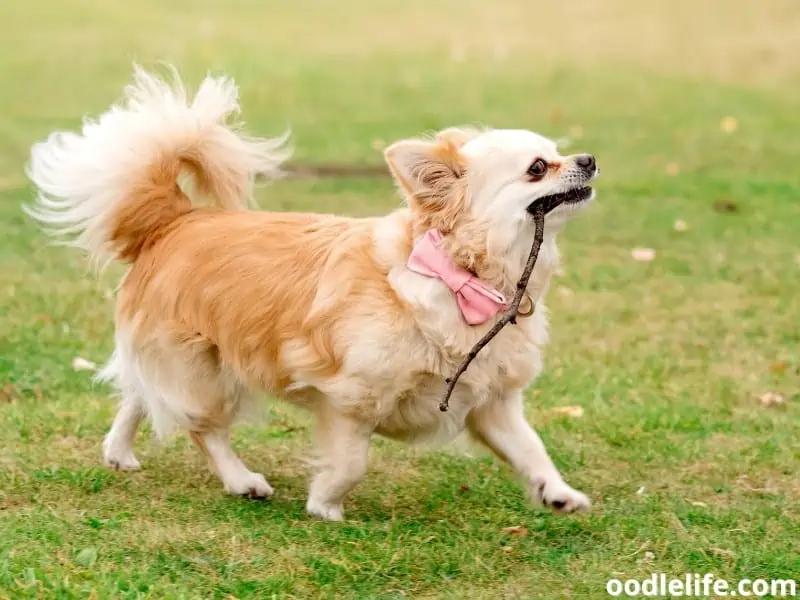
To keep healthy and happy, Chihuahuas enjoy playing and running as all dogs do. However, because they are smaller than most dogs, they require slightly less exercise.
Generally speaking, you should give your Chihuahua at least half an hour of physical activity each day. This can be accomplished by going for a brisk walk, playing fetch, or just sprinting around the backyard.
Chihuahuas who get frequent exercise will stay fit and be less inclined to act destructively or out of boredom. So, if you’re considering acquiring a Chihuahua, be ready to provide them with the necessary exercise!
What Is A Chihuahua’s Maximum Running Speed?
Your Chihuahua buddy can run up to 21 mph when running at its maximum potential (33.7 KMH). This does not imply that the dog can maintain this speed for an extended period.
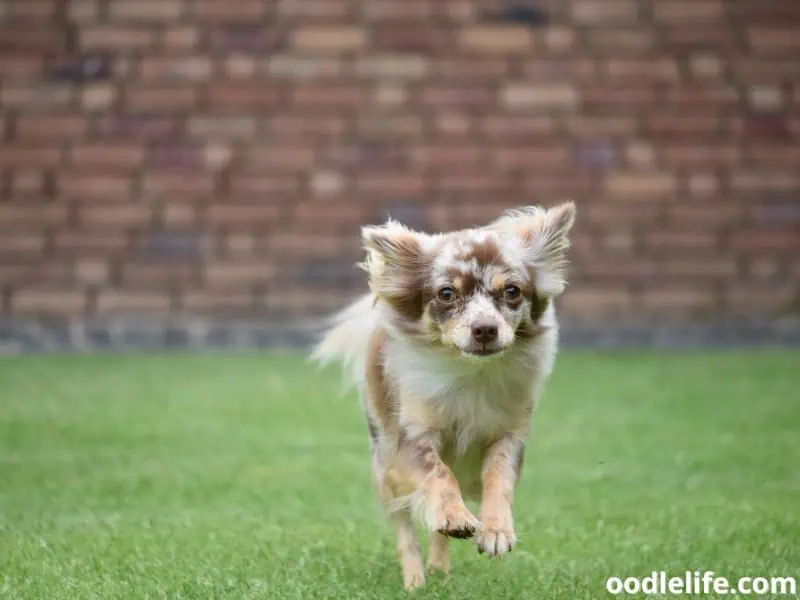
They are sprinters, and their small sizes and short legs mean that they won’t be able to maintain this speed for very long.
Untrained Chihuahuas can run up to 8 mph (12 kph), but with proper training, you can get your dog to run up to 21 mph (33.7 kph) when they are at their fastest. For people looking for enjoyable activities to do outside with their Chihuahua, this is a cool task to take on because these dogs are athletic and naturally spirited.
Chihuahuas are agile little runners who like it! They also excel in activities like agility courses. Running might be the next adventure you and your excitable dog decide to take on!
Can I Train My Chihuahua To Run Faster?
Many dogs can be trained to run faster, but it is crucial to get your dog assessed by a veterinarian before embarking on any training regimen.
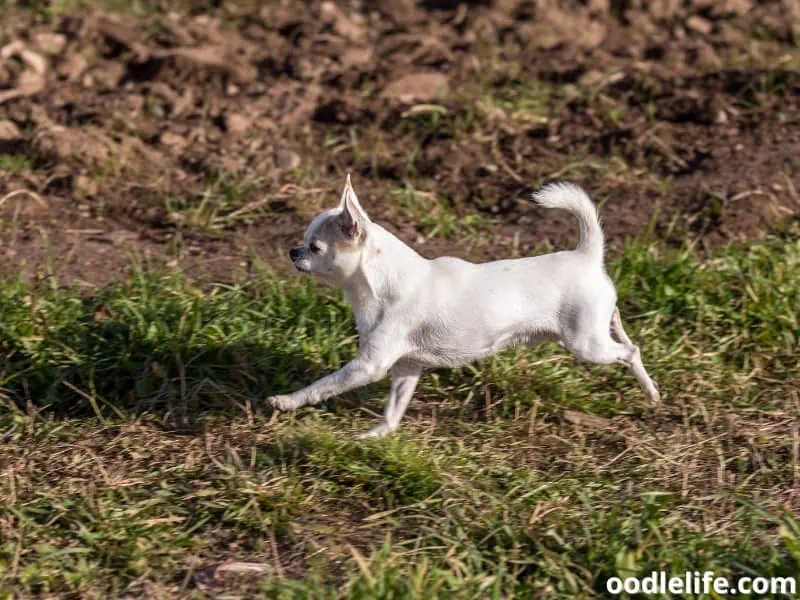
Chihuahuas can be taught a variety of skills, such as agility training, which will help them run more quickly. Dogs often increase their endurance, speed, and coordination with the help of agility training.
Agility training has several advantages for Chihuahuas, including boosting their self-assurance and socialization.
Participating in agility training with your pup is a great way to bond and show off your dog’s skills. Agility training strengthens the relationship between pet and owner while also giving your pup a physical AND mental workout that leads to more confidence in both of you.
With each activity, you can introduce new challenges as your dog becomes more agile and acts quickly to commands, accelerating its learning process.
Not only is it exciting but providing structure makes for easier commands during activities such as walks or runs. It won’t take long for them to learn the routine and have loads of fun!
How Quickly Can A Chihuahua Run After Training?
All Chihuahuas are adept short-distance runners, but those that have received agility training are very fast.
Chihuahuas can typically run at speeds of up to 15 mph, but trained Chihuahuas have been known to reach speeds of 30 mph with some agility training.
Training Your Chihuahua To Run Fast – Tips and Tricks
Chihuahuas are skilled and quick animals that like to learn new things. It will take time and effort, but you can train them to become their quickest and excel in running and agility courses.
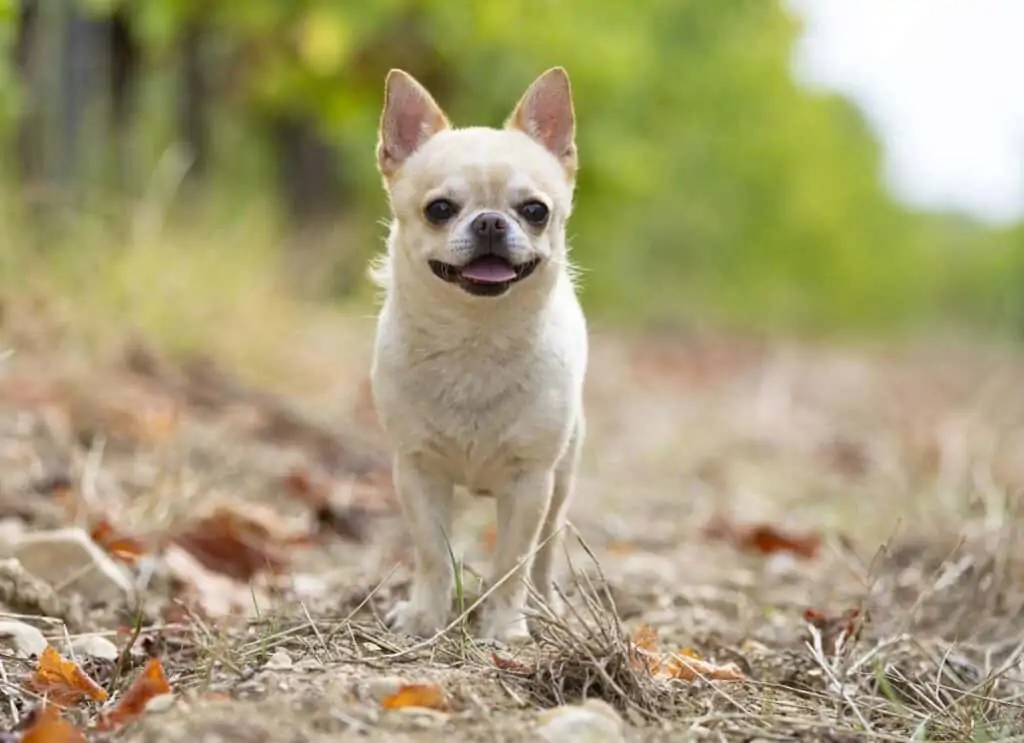
If you are thinking of starting training your Chihuahua to run fast, here are a few tips.
First, begin slowly. Don’t rush into things and push too hard. Make sure you get your dog checked by a veterinarian before beginning training.
Then, pick a nice area to train in. You’ll want something that will protect the paws and joints when they move fast and continuously. A veterinarian or trainer can also provide you with some wonderful suggestions.
Also, check with your vet on food and nutrition. Since your Chihuahua is going to expend more energy, you might need to up the food intake. You can also think about supplements like omega-3 fatty acids and more protein to support the muscles and joints of your dog.
As always, consult with your vet before changing your dog’s diet or committing to a regular running schedule. Consider a professional health screen to clear your dog of any joint problems like hip dysplasia or luxating patella.
Every dog has limitations, so watch your Chihuahua carefully. Your dog’s health is of utmost importance so safeguarding it should be the top priority.
The stride of a Chihuahua is shorter than that of a person. What is a slow jog to you might be a sprint for them, so don’t push them too hard and go at a pace that is comfortable for both of you.
Since their health could be in jeopardy, it’s vital to assist them in beginning and work at their pace.
You can quicken your pace if they get acclimated to following along with your stride. Make sure not to push them from walking to running because this can lead to all kinds of joint and muscle problems.
Of course, a trainer can assist you with this, especially if you find one who has experience with Chihuahuas. They’ll assist you in determining how to blend stride with pace and increase the intensity of everything so that it is comfortable and makes sense for everyone concerned.
The running surface is crucial since concrete can burn your dog’s sensitive feet. Try to train on soft surfaces, such as grass or trail. As they exercise, a softer surface will also be less impact on their joints.
In addition, try choosing a time of day when it is cooler like the early mornings or evenings. Your Chihuahua might be able to perform better if the weather is cooler, and it will have them less susceptible to heat exhaustion.
You may also want to alternate exercise between walks and runs to give your dog a few easier days. Once they get fitting and stronger, you can then increase the intensity of the workouts.
If you are running with your Chihuahua, also make sure that they know how to safely run on a leash. Chihuahuas are little even when fully grown. Stepping on them can cause some serious damage!
Be extremely cautious where you place your own feet if you are moving swiftly while walking, jogging, or even running with your Chihuahua.
If you have high-visibility clothing, put it on and keep them leashed so you can maintain as much control as you can.
Despite having a top speed of 21 MPH (33.7 KMH), your Chihuahua may not always want to go so fast. They might feel more content traveling at 8 mph (12 km/h) or even slower.
Even if you are aware that your dog is physically capable of moving more quickly, you should pay attention to their requirements and avoid pressuring them to do so.
Common Health Problems When Training
Whether you are training your Chihuahua to run on the road or on an agility course, there are a few things that you should watch out for. Injuries and sprains are common, and the shoulders, back, limbs, and neck can get easily hurt with repeated strain.
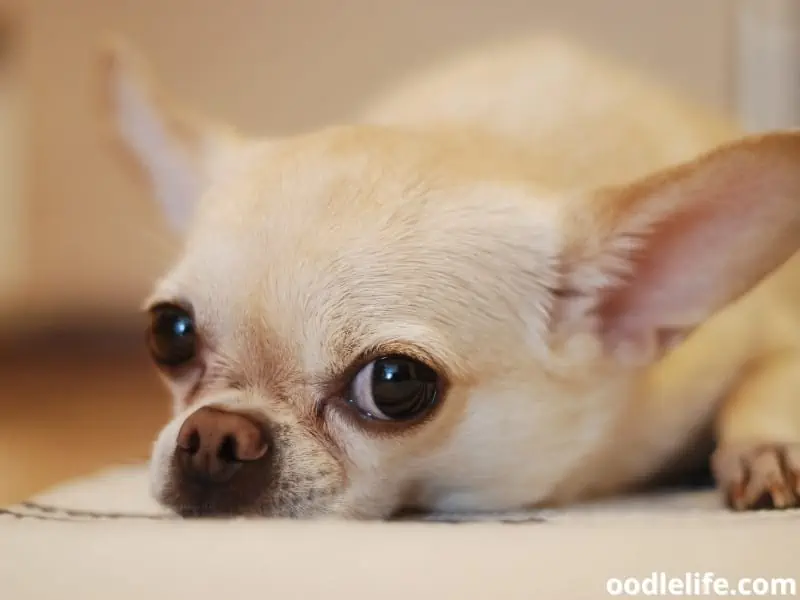
In addition, if you have an older furry friend in your family, chances are you’ve heard of arthritis in dogs. This condition can cause dogs to experience stiffness, lameness and difficulty moving throughout the day.
Chihuahuas are also prone to a few joint conditions like luxating patella, hip dysplasia, and spinal injuries.
Patellar luxation is a common orthopedic condition seen in Chihuahuas, as well as other toy dogs. It occurs when the kneecap slides out of its natural groove and disrupts normal leg movement.
Symptoms of this condition can include an abnormal gait, difficulty or avoidance of jumping or running, and limping after exercise. Additionally, those affected may experience recurring lameness on the same side if left untreated.
Hip dysplasia is a fairly common condition that affects the joints in their hips and can be eventually be very detrimental to the animal’s health and overall quality of life.
It’s essential for Chihuahua owners to know how to recognize and identify this condition in its early stages, so proper action can be taken to ensure their beloved pet receives adequate treatment in order to prevent any long-term negative effects.
Knowing the signs of hip dysplasia is key. If your Chihuahua shows signs of pain or limping when running or walking, it could be an indicator of hip dysplasia.
If you think your Chihuahua might be uncomfortable due to any of these issues, it’s best to consult your veterinarian and explore treatment options.